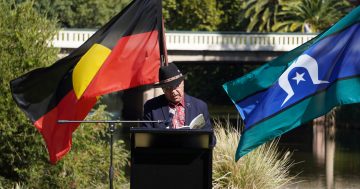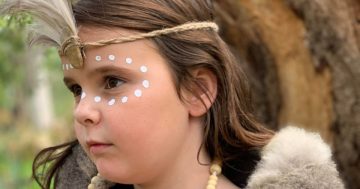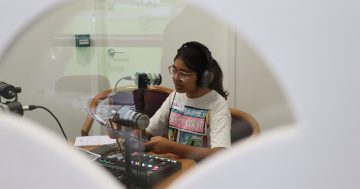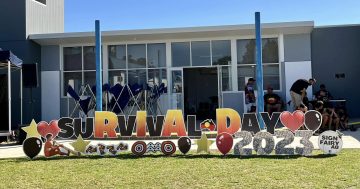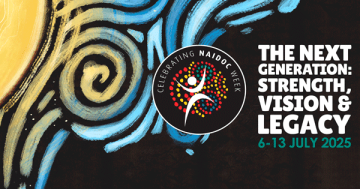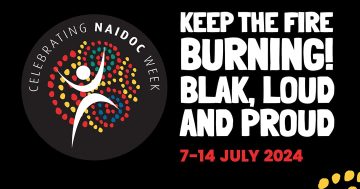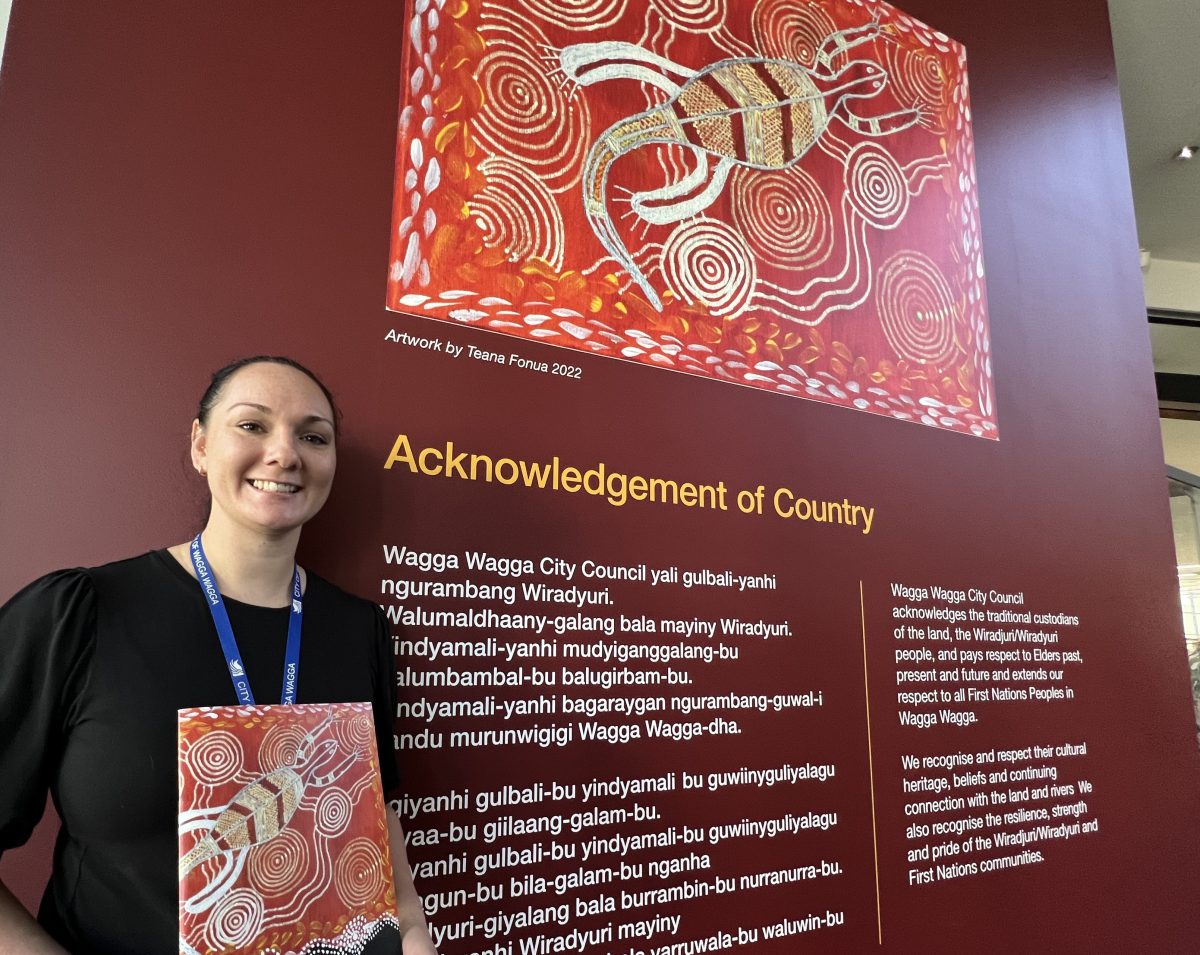
Aboriginal community development officer Michaella Alexander with Wagga’s Acknowledgement of Country at the Civic Centre. Photo: Chris Roe.
If you’ve paid a visit to Wagga’s civic precinct this year, you will have no doubt wandered past Wagga Wagga City Council’s revamped Acknowledgement of Country.
Located just inside the doors beside the library entrance, it’s hard to miss the maroon wall featuring local artwork and the acknowledgement in both the Wiradjuri language and English.
“Wagga Wagga City Council yali gulbali-yanhi ngurambang Wiradyuri,” it begins, acknowledging the “traditional custodians of the land”.
Community development coordinator Alex Osgood explained that the acknowledgement was a component of WWCC’s Reconciliation Action Plan.
“Council worked with Uncle Stan Grant Senior and the Wiradjuri Language Centre at CSU [Charles Sturt University] to develop the Acknowledgement of Country that WWCC uses and you will find it at the start of all of our key documents,” she said.
“It’s important that we have the Wiradjuri language first, and then the English translation.”
Dr Stan Grant Senior is a Wiradjuri elder from the Riverina who has been recognised for his work to reinvigorate the language spoken by his grandfather.
Wiradjuri people were banned from speaking language publicly until the middle of the 20th century, and Uncle Stan and a growing research team have spent decades restoring the language from the last remaining native speakers and colonial records and writings.
It is an ancient language that evolved here in the region we now call the Riverina and reflects knowledge and generations of lived experience on this Country.
The importance of the restoration of the Wiradjuri language is now globally recognised and is taught through CSU and at schools and TAFE campuses in NSW.
The Acknowledgement of Country is a modern interpretation of an ancient tradition once practised by First Nations people as they passed from one tribal boundary to another, requesting safe passage and spiritual protection.
A Welcome to Country can only be performed by a traditional owner on their own Country, or by a person approved to do so by recognised elders.
Acknowledgements and welcomes are becoming increasingly common at meetings, schools and gatherings and are a way of showing respect and recognising Australia’s ancient roots that were often ignored or suppressed during colonisation.
Where schoolchildren once sang God Save the Queen and saw themselves as a young nation of migrants, children today have a broader understanding of their place in the ancient story of the land we now call Australia.
The artwork featured on the wall above the acknowledgement is by a local First Nations young person and features the Wiradjuri totem, the googar (goanna).
“This was done by Teena. She was 11 years old at the time when she created this, and it’s also the hero [cover] artwork on our Reconciliation Action Plan,” Alex said.
”When we were talking with elders and the community, everyone just loved it because it was so vibrant and we find people’s eyes are really drawn towards it when they come into the Civic Centre.
“We think it’s beautiful and we’re pretty proud of it.”







